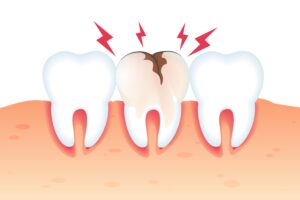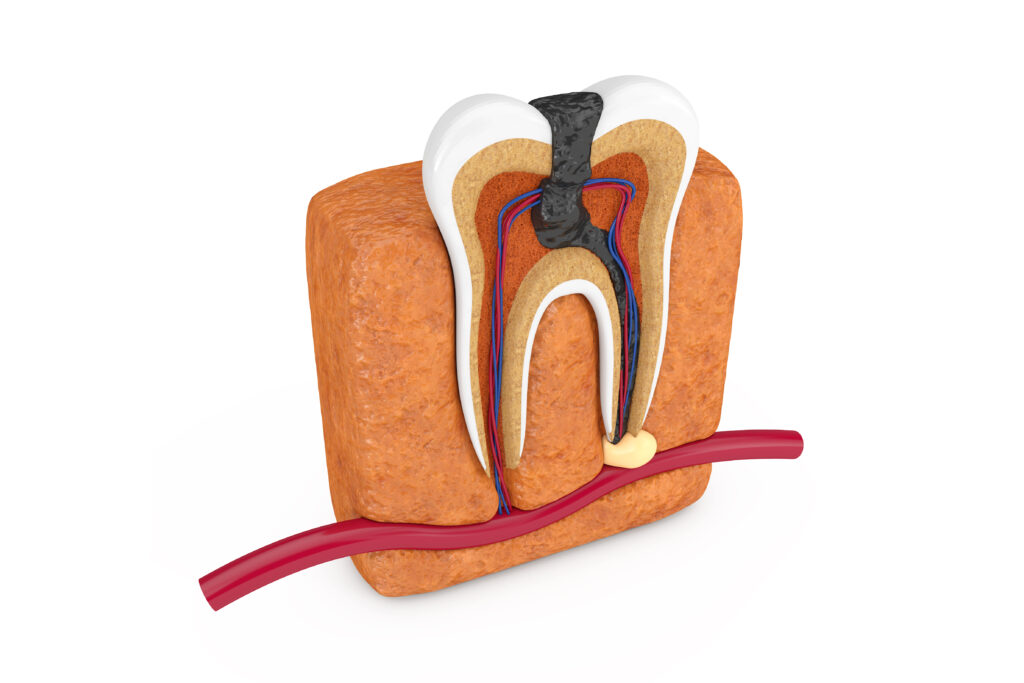Endodontics
A branch of dentistry associated with prevention , diagnosis and treatment of pathologies of their dental pulp and its sequelae
The term endodontics comes from the Greek words for Endo and “odont” which mean inside “inside” and “tooth” respectively . This branch of dentistry is associated with prevention , diagnosis and treatment of pathologies of their dental pulp and its sequelae
Primary Aims of Endodontic Therapy
- Maintain life of Dental Pulp(innermost soft tissue layer of a tooth )
- Preserve and restore tooth with damaged pulp
- Preserve and restore the teeth which havent given favourable outcomes to the previous endodontic treatment
Routine Endodontic Procedures
- Single Sitting RCT
- Multi-Sitting RCT
- Re-RCT
- RCT with Post & Core
- Laser Assisted RCT
- Bleaching
- Tooth Sensitivity

Root Canal Treatments
One of the main treatment methods is that constitute part of endodotnic therapies are root canal treatments. A root canal treatment (RCT) is a treatment to remove the soft tissue inside of a tooth that is infected, decayed, or non-vital. The infection is removed by cleaning it out with a special instrument called a root canal instrument that has a sharp end. Some infections can be left, but it is usually removed. After all of the infected tissue is removed, the remaining tissue is cleaned, disinfected and sealed. The tooth is then filled with a healing material and a crown to hold the tooth in place and make it stronger.
When You might require a Root Canal ?
- Tooth Pain
- Sensitivity
- Inflammation around the tooth region
- Presence of soft tissue at the center of tooth
- Injury / Discoloration of tooth
- Difficulty in chewing

When You might require a Root Canal ?
- Reduce and stop pain associated with tooth
- Restore the ability to chew comfortably
- Stop tooth sensitivity
- Stop further progression of dental caries

Steps of Root Canal Treatment
- Explanation: Patient is first explained about Root Canal Treatment and procedure steps.
- Anesthesia: Administration of Local Anesthesia (LA), procedure is started only after LA starts acting and patient confirms numbness
- Isolation: Concerned Tooth or teeth are isolated from
- Drilling: A opening is made into the tooth to access the dental pulp
- Removal: Affected , infected or necrosed or dental pulp is removed from the pulp chambers.
- Cleaning & Shaping: After removal of the dental pulp, the chambers that were housing it are thoroughly cleaned .
- Obturation: In place of the removed dental pulp a speacial thermoplastic material called gutta percha is placed and sealed in the chambers . If the tooth is too weak a fiber or metal post may also be given.
- Sealing: A protective layer of cement is placed over the gutta percha
- Impressions: Impression of the tooth is taken
- Crown Placement: Based on the case feasibility and patients preference, a crown derived from the previous impression is cemented onto the Root Canal Treated Tooth
Laser Assisted RCT
A laser RCT follows basically the same procedure but there is one important difference: for this particular treatment, a laser is used instead of a drill. This makes quite a significant difference depending on who you ask. If you’re the patient, then better results and less chair time can be expected For the dentist administering your treatment, it’s also easier in many ways due to accuracy and speediness of having a laser device instead of a hand-held power tool spinning at a high rate of speed like a drill might have done. If it were only up to us as dental professionals though, we would opt for making use of lasers over drills for better patient satisfaction and comfort
Re-RCT:
A Re-RCT as the name suggests is redoing a root canal treatment on a endontically treated tooth. A tooth might require Re-RCT due to following reasons :
- Initialization of new caries /decay
- Re-occurrence of pain & discomfort
Management of Discolored Tooth
Tooth discoloration can be due to internal , external stains or both . Depending on the treatment modality the treatment modality and number of clinic visits become variable . External stains are easy to get rid of and simple clinical or non clinic treatments can get the desired results . Internal stains om the other hand first require the etiology to be understood before any type of treatment can be started . Bleaching and basic oral prophylactic procedures (Scaling) are two most common methods of managing discolored teeth
Tooth Sensitivity
Tooth sensitivity also know as dentin sensitivity, is defined as “sharp , short pain arising from exposed dentin in response to stimuli typically thermal , chemical , tactile or osmotic or which cannot be ascribed to any other dental defect or pathology” – Holland et al, 1997
People in the age group of 20-40 are the most common sufferers , with peak being in the third decade of life. Females tend to be more prone . Older individuals show lower incidence of this condition. Right handed people tend to have higher incidence on the left side of their teeth and left handed on right side.
Based on the degree of sensitivity , tooth sensitivity can be treated with special sensitivity toothpastes, patient education or with manual procedural interventions
Frequently Asked Questions
No, Root Canal Treatments ( RCT) are not painful, before starting any endodontic procedure. Doctors give numbing agents . The numbing agents within minutes. Making the patient no sensation in region of patients mouth requiring treatment
Yes, we do Single Sitting Root Canal Treatments and we as doctors also prefer Single RCT’s. Note , Single Single Sitting RCT’s are not possible in all cases, for example when the infection within /adjacent / below the tooth is more , we might have to opt for multiple sittings. Multiple sitting RCT’s usually go upto 2-3 clinic visits
Yes, A “cap” or a dental crown is absolutely necessary . RCT’s involve the removal diseased or infected dental pulp. The dental pulp is provides life to the tooth, without the life supply to tooth, a tooth is lifeless and is extrewmly prone to fractures . SO though after a RCT a patient can get rid of associated pain and sensitivity , with a protective dental crown over the tooth the longevity of the tooth as a whole can not be assured
No , we don not recommend this at all. Our Doctors as far as possible try to save the affected/infected tooth. We advice tooth removals in scenarios only if we are confident that a successful RCT cannot be done, due to extensive damage.
Our own natural teeth are way better than artificial prosthesis . Plus considering the financial aspect to Single Tooth RCT’s with a subsequent dental crown is a better option when compared removal and subsequent prosthesis
